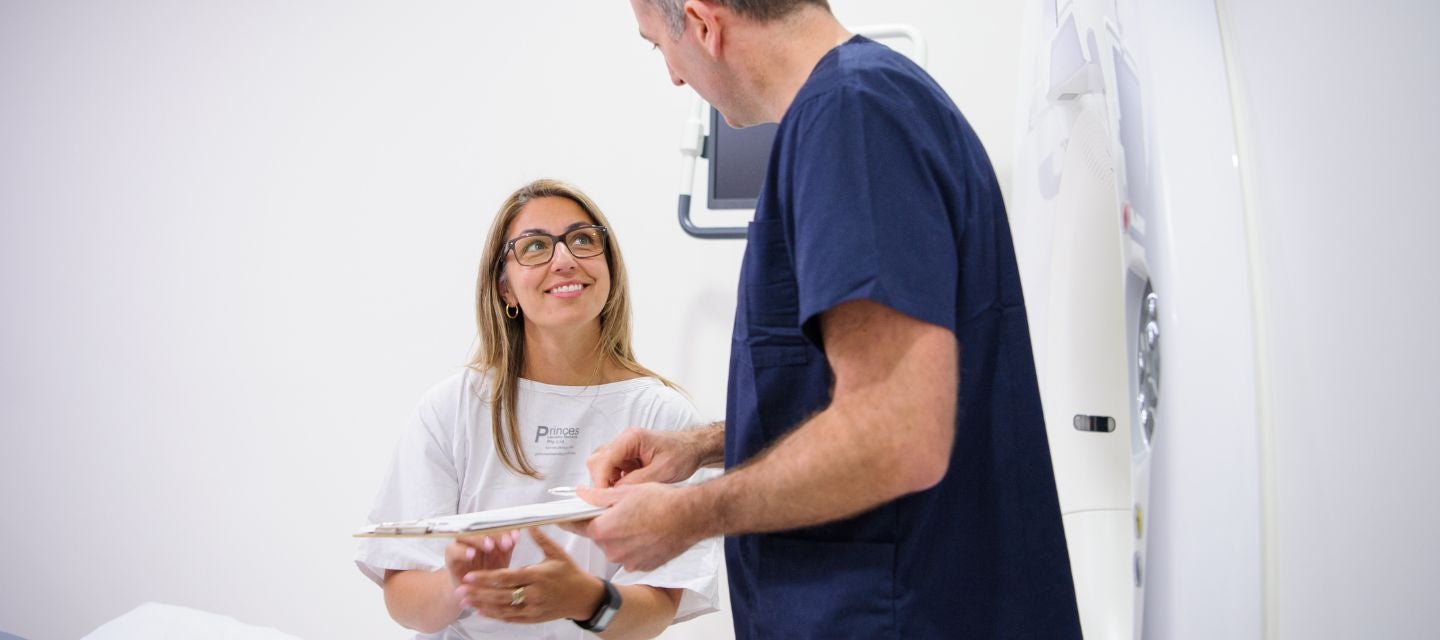

Joint injections
Joint injections

What is a joint injection?
A common cause of a painful joint is synovitis (inflammation of the lining). It can be useful to inject corticosteroid and/or local anaesthetic medication directly into the joint,or the soft tissue next to a joint (often called a bursa), to reduce the inflammation and provide pain relief. Reduction in pain may make physical therapy more effective.
This procedure is most often used in the shoulder, knee, or hip but may also be helpful in other joints.
Sometimes it can be difficult for your doctor to know exactly what is causing your joint pain. If the pain is not mainly due to joint inflammation, the injection may not improve your symptoms. Although this may be disappointing to you, it can be helpful information for your doctor as it means that another cause of the joint pain needs to be considered.
Watch video
Do you speak a language other than English? You can watch this video using translated subtitles - follow these instructions to select your language.
How do I prepare for a joint injection? keyboard_arrow_down
No special preparation is required before a joint injection and you may eat and drink as normal. If you are taking blood thinners you must tell the receptionist when making your booking. This will allow the radiologist to assess whether it is safe to do the injection.
On the day of your appointment, please bring any previous x-rays, ultrasound, CT or MRI scans taken as part of your joint pain history. Please also tell the radiologist if you are allergic to any medications.
It is recommended to wear comfortable clothing with easy access to the joint being injected.
What happens during a joint injection? keyboard_arrow_down
The joint injection is most commonly performed using ultrasound to guide the injection. The exact technique varies depending on the joint to be injected and the radiologist (specialist doctor) who performs the injection.
Generally a preliminary scan will be performed to locate the exact point to be injected, to make sure the injection goes into the joint itself where it as a better chance of working. This point may be marked on your skin before the area is cleaned with an antiseptic solution to prevent infection. A needle will then be placed into the joint, either at the point marked on your skin, or using the ultrasound to see the tip of the needle as it moves into the joint or bursa.
Sometimes the radiologist may remove some fluid from the joint for analysis, before administering the injection into the joint or bursa.
How long does a joint injection take? keyboard_arrow_down
It can vary, but an ultrasound guided injection generally takes between 15 and 30 minutes.
What are the benefits of a joint injection? keyboard_arrow_down
Joint injections reduce synovial inflammation, to reduce pain and enable you to have physical therapy. Overall, steroid injections into joints (particularly the shoulder and the knee) appear to provide short to medium term pain relief (3 weeks to 3 months), particularly when combined (in the shoulder) with appropriate physical therapy. They do not provide long term pain relief and do not alter the course of underlying joint disease (e.g. osteoarthritis).
Who does a joint injection? keyboard_arrow_down
The joint injection is performed by a radiologist (specialist doctor) who uses an ultrasound machine, or less commonly fluoroscopy or a CT scan, to guide the needle into the joint.
What are the risks of a joint injection? keyboard_arrow_down
This is a very safe procedure with few risks.
The risk of infection is very small and lies between 1 in 20,000 and 1 in 75,000 injections performed. The procedure should not be performed if there is broken skin or infection overlying the joint, or if the joint may already be infected.
There are possible complications of the steroid injection, which include aggravation of the pain due to irritation of the joint lining by crystals in the steroid solution. If the steroid is not injected solely into the joint, there is a risk of damage to the soft tissues at the injection site, including a weakening of the skin or subcutaneous fat (found just beneath the skin) and rupture of the tendons around the joint.
Some patients find that the injection gives them good pain relief for a few months, but then the pain comes back. Although the exact risk of multiple injections is not known, most doctors would advise against having injections more than 3-4 times a year to avoid damage to the joint.
Occasionally people are allergic to the injected medication (as with any drug). It is very uncommon. You should advise your doctor and the radiologist performing the joint injection of any allergies you may have.
An ultrasound guided injection does not use x-ray contrast medium, but this may be used if the injection is done using fluoroscopy (x-rays) or CT if this is a preference of the radiologist.
Are there any after effects of a joint injection? keyboard_arrow_down
You may experience more soreness in the joint after the injection, but may also feel better initially as a result of the local anaesthetic. The anaesthetic will generally wear off after a few hours and you may have more soreness in the joint than before the injection. This may last for 2-3 days after the injection. If the steroid part of the injection is going to reduce the pain and inflammation in the joint, it will usually start to occur between 3-5 days after the injection. If the pain becomes much worse in the days following the injection, this may indicate either an aggravation of the synovitis by the injection, or very rarely an infection of the joint. If this occurs you should immediately contact your referring doctor or the emergency department of a hospital as soon as possible.
Are there any after effects of an ultrasound? keyboard_arrow_down
It is rare to have after effects from an ultrasound examination.

This information has been reviewed and approved by Dr Ronald Shnier (I-MED Chief Medical Officer).
Related articles


Revolutionising patient pain assessment

This information has been reviewed and approved by Dr Ronald Shnier (I-MED Chief Medical Officer).
Related articles

Why I-MED Radiology

